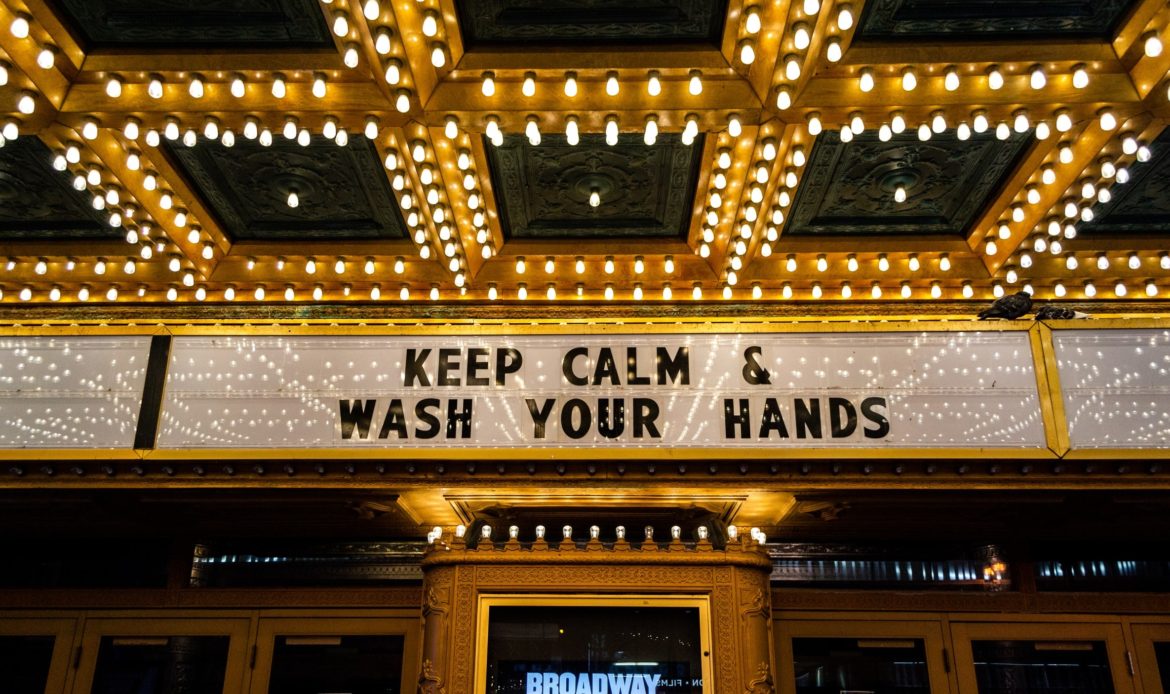The Curtains Calls: Broadway’s Post-Pandemic Comeback

Theatre goers and musical lovers mourned the loss of Broadway, as all 41 theatres fell victim to the necessary COVID-19 closures following the outbreak of the pandemic. Though the initial green light to reopen in September was given by the state in May 2021, it seemed an unlikely prospect in the face of vaccine hesitancy and the beginning of an aggressive new Delta variant.
Yet those who doubted were happily proven wrong. This September marked the return of musical theatre after the longest shut-down in New York City’s history—a symbol of hope after 18 months of solitude. The Phantom resumed its 32-year haunt in Broadway’s longest running show, The Phantom of the Opera, Simba returned to reclaim his throne in Disney’s The Lion King, and Orpheus journeyed back to the Underworld in the award-winning Hadestown, which continues with its original cast after making its Broadway debut in 2019. Other returning shows include classics like Wicked, Chicago, Moulin Rouge, and Hamilton.
Under the condition of full vaccination or proof of a negative COVID-19 test result, most theatres are accepting audience-members at full capacity, but Broadway’s grand return is not so easy as simply reopening the doors. The Broadway League’s box office data reveals that attendance is at less than 80 percent capacity. Considering the lingering effects of lockdown culture, as well as the dwindling number of tourists—who typically make up two-thirds of Broadway audiences—these challenges, while not unexpected, do beg the question: Is Broadway’s exclusivity no longer viable in a post-pandemic world?
I don’t ever want to take live theatre for granted ever again, do you?
Lin Manuel Miranda
Live theatre has always been a unique experience—the surge of music, the entrance of a well-loved performer, the infectious roar of applause. There is a unique kind of awe that follows witnessing something so perfectly executed—a refreshing entertainment in an age that has been redefined by isolated streaming. Theatre performance is arguably more demanding than acting in front of a camera, where any mistake can be erased, and more thrilling than any cinema, where the exact same performance is a guarantee.
But the effortless mystique of a live show is hardly achieved without effort. Theatre relies on a tireless cast and crew whose occupation demands they work at least 6 days a week. It is not a mass-distributed entertainment but a near-tangible adventure and the effort that goes into every show is reflected in the cost of a ticket. Ticket prices—though relatively unchanged from before the lockdown—are still expensive, ranging from $30 to $400, depending on the show and the seating.
With tourism in New York at an all-time low and COVID-19 restrictions complicating travel, it is difficult to imagine a theatre reaching its maximum capacity. Yet, it is equally difficult to imagine a world in which live theatre is obsolete.
After Broadway’s shutdown, thousands of arts and entertainment workers lost their only source of income and were forced to rely on unemployment benefits or charity from organizations like The Actors Fund. Broadway’s closure also marked the temporary stop of an economic engine. According to the U.S. Bureau of Economic Analysis, arts and cultural activity accounts for 4.5% of the country’s gross-domestic product. Theatre is more than a historical staple of New York City, it is also a determinant of livelihood for those who have dedicated their lives to its craft. Theatre reporter Michael Paulson describes Broadway as “a sort of barometer of the city’s health. With Broadway closed, New York appears to be ailing. With Broadway reopening, recovery seems possible.”
Though attendance numbers are not as high as they could be, this is not an indicator of a dying art but rather an accurate measure of a city that is still healing—a city that will need its arts to do so.
Broadway’s reinvigorating effect was undeniable from the audience’s reactions to their favourite musicals finally returning. On the night of its reopening, The Phantom of the Opera crew carried the celebration out to the street. The audience left the Majestic Theatre to find Andrew Lloyd Webber, the musical’s composer, in a DJ booth playing club remixes of Phantom classics, while chorus members danced on the marquee behind him and the gathering crowds cheered with delight. The cast of Hadestown had a similar idea and held a sing-along from the balcony of the Walter Kerr Theatre, with the audience spilling out into the street and leaping to catch the red roses being thrown down by the crew.
Lin Manuel Miranda, who wrote and starred in Hamilton during its original run, surprised the audience on the night of its reopening with a heartfelt speech welcoming them back to the Richard Rodgers Theatre. He thanked everyone for getting vaccinated and asked, “I don’t ever want to take live theatre for granted ever again, do you?” which was met with a resounding no.
Rightfully so.
In the shadow of the COVID-19 pandemic, the world has certainly changed, but there is reassurance to be found in the arts and reassurance of humanity’s simplest self. We seek stories and beauty, intimacy and connection. There is an authenticity to live theatre that cannot be replicated in other forms of entertainment or replaced by a recording on a silver screen. Though a complete recovery may be gradual, Broadway’s return is nevertheless a great triumph for our beloved human arts.